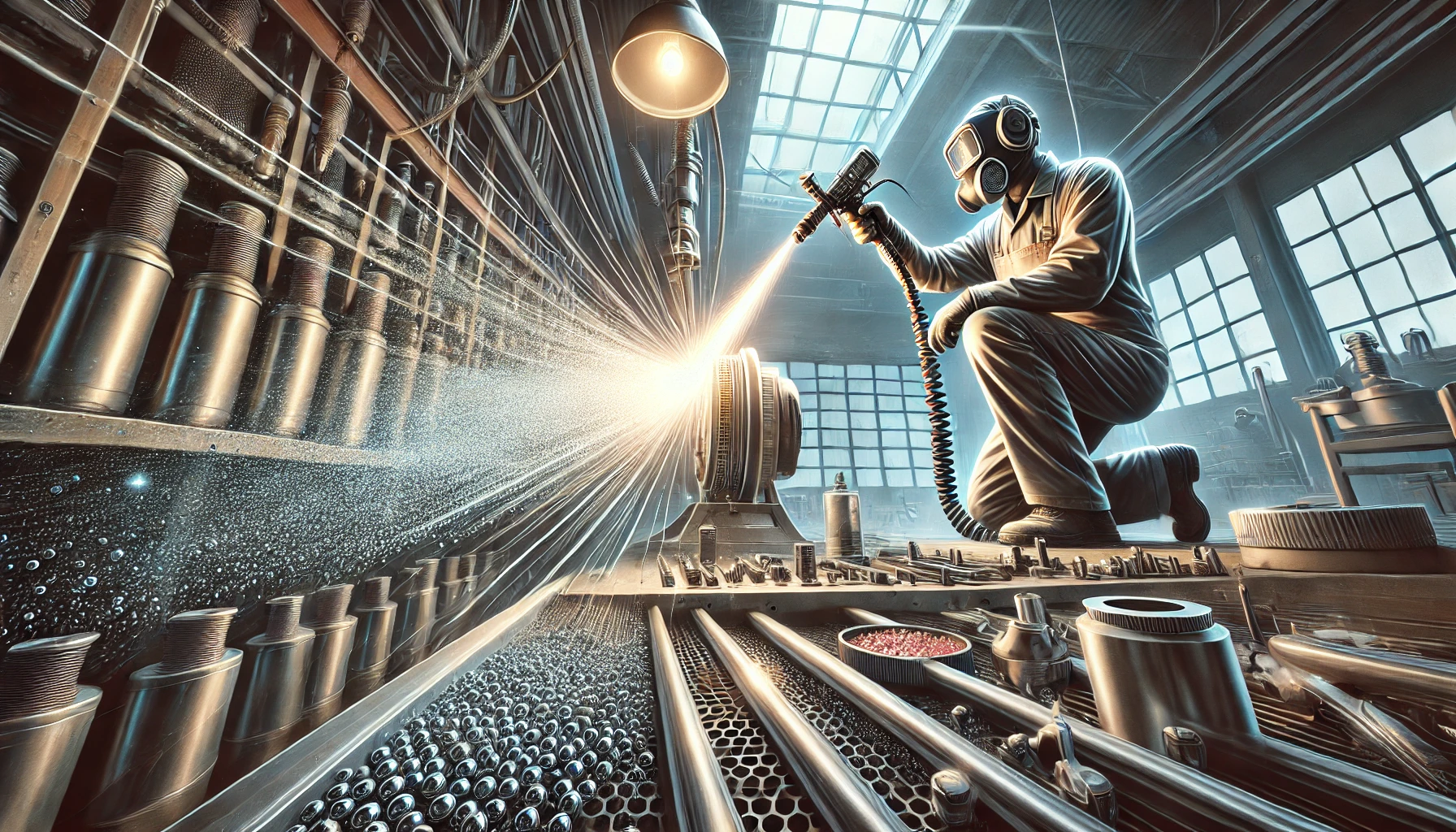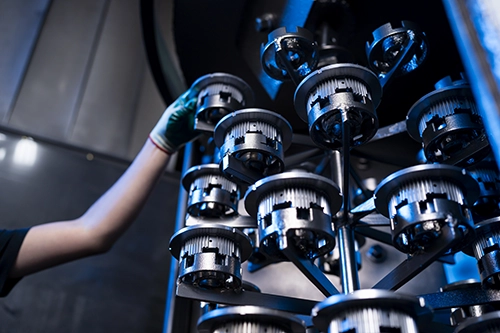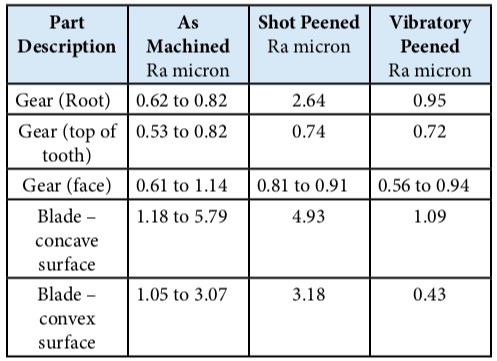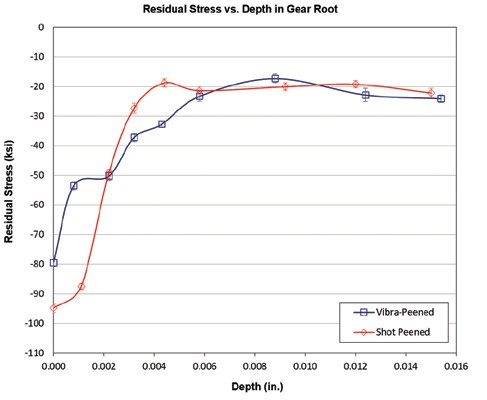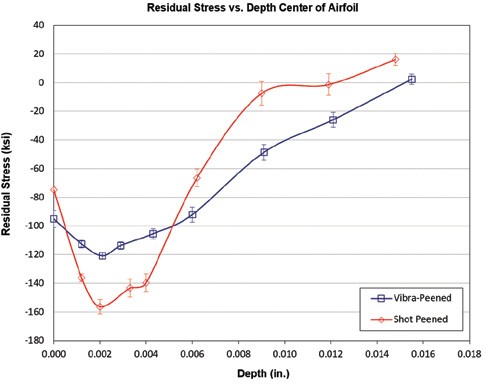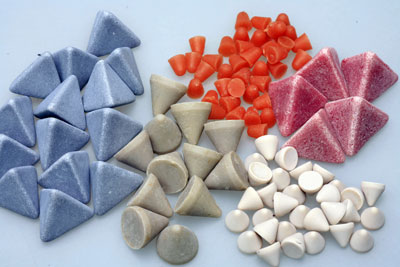Producing good surface finishes using barrel finishing depends on the right selection and use of tumblers, abrasives, lubricating agents, carrying agents and polishing agents.
Barrel finishing, also known as barrel tumbling, is a surface improving operation in which a mixture of parts, media and compounds are placed in a six- or eight-sided barrel and rotated at a predetermined speed for the purpose of rounding corners, deburring, grinding, descaling, deflashing, improving surface finish, burnishing, polishing and radiusing parts in bulk. It works by tumbling parts in a rotating barrel, thus creating friction by tumbling parts against each other and against other materials, such as media and compounds.
Tumbling Highlights
- Parts can be finished less expensively than by hand.
- Many parts can be processed at one time.
- Requires very little handling.
- Parts are tougher and stronger after tumbling.
- Tumbling provides a certain amount of stress relief.
- Forgings and castings can be blended.
- Machine parts and stampings can be deburred and burnished to a high finish.
- On long runs, the systems can run overnight.
- Careful and proper machining of your parts will save tumbling time.
There are two types of barrel finishing: wet tumbling and dry tumbling. Wet tumbling is used almost exclusively for removal of excess stock. Dry tumbling is used for all phases, including polishing.
Wet Tumbling
Horizontal and oblique barrels are commonly used in wet tumbling. The horizontal barrel is generally octagonal or hexagonal in shape. Though the oblique barrel is easier to load and unload, the horizontal is preferred because of its larger capacity and better tumbling action.
Barrels are made of steel, often with linings of wood, rubber, neoprene, urethane, PVC or vinyl. The lining cushions the impact of the tumbling parts against the barrel, thus prolonging the life of the barrel. The most popular barrel dimensions vary in diameter (18″ to 36″) and in length (18″ to 42″). Usually, the diameter is smaller than the length. Horizontal barrel speeds vary from 20 to 38 RPM, depending on the barrel size and the items to be tumbled. Fragile parts, for example, require slower speeds to prevent possible damage.
After a barrel is filled up to about half of its capacity with parts and media, water is added to within three to five inches below the load. This can be varied either way. The lower the water level, the faster the cut. The more water used, the finer the finish and the slower the cutting rate. For burnishing, the water should be about level with the load.
The compound is put into the barrel last. Depending upon the amount of material to be removed from the parts, tumbling will take anywhere from 6 to 24 hours. Very light plastic parts require adding smooth ceramic or hardwood media in a dry process to increase the load weight.
After a run, the parts and the barrel should be rinsed thoroughly with fresh water. Parts are then removed and dried by one of several methods, such as tumbling with corn cob grit, sitting under heat lamps or spinning dry. Rinsing media after it has been used can prevent contamination or undesirable results if reused later.
Most mass finishing methods employ the use of water to lubricate and carry away the cutting residue. Without water, the parts would be scratched and black from embedded abrasives. When combined with our compounds, the water not only carries the abrasives and keeps the media clean, but also acts as a cushion to help protect the parts.
However, there are times when water can be a hindrance, such as when processing thin, flat parts (where the water surface tension makes the parts cling together) or when trying to polish or smooth a plastic part (that can absorb the water and become too soft to resist scratching or deformation). There are also polishing operations on jewelry that are limited to the smoothness of the shine that is produced when the media is too heavy and hard. So, how do we run parts safely without the help of water?
Dry Tumbling
For dry tumbling, the horizontal octagonal barrel is used almost exclusively. This barrel sometimes has a metal skin, and a hardwood lining which can be replaced when necessary. A barrel that is 30″ in diameter by either 36″ or 42″ in length is considered standard. For versatility, these barrels may be divided into two compartments. Dry barrels are often double-decked so that one barrel is above the other, although both are set in the same frame. This saves floor space, especially when operating multiple barrels. Barrel speeds in dry tumbling are generally kept at 28 to 32 RPM.
Over the years, several techniques have been developed. In the earliest tumbling operations, water was not used. Sand was used with smooth stones. The sand not only aided the cutting, but also provided an extraordinary amount of surface area to carry the dirty residue. This avoided having the residue embedded into the surface of the parts. Thus, if something is provided to carry the dirt instead of water, parts can be run successfully.
The addition of an organic material such as corn cob grit or walnut shell grit proves more absorbent than sand, therefore carrying more dirt and even oils. Organic materials are also very good carriers of abrasives.
Plastics require a soft media, such as wood pegs, to avoid damage. However, a soft media does not cut much. Adding corn cob grit treated with pumice to the load greatly speeds up cutting. Pumice is silica that is a volcanic ash product. It is a friable, very sharp, long crystal. Because it is soft, it will fracture into smaller sharp crystals even under the light load of wood media. Harder abrasives will not fracture and, therefore, will stop cutting when they get dull. Hence, pumice is the abrasive of choice for dry cutting.
Self-tumbling metal parts with ceramic or plastic media will work very well with pumice added as an abrasive and with corn cob grit added to absorb the dirt.
Extremely high, bright finishes can be achieved by using wood pegs or walnut shells treated with a wax and an abrasive. The abrasive used should be one micron or less in size. There are ready-made polishing creams for this type of work, such as Metaglos and Microlyte. Metal parts can be finished in a tumbling barrel overnight, or in an hour or less in a high-energy machine. Most wire eyeglass frames and quite a bit of gold jewelry are polished in this process.
Plastic parts, such as buttons and plastic eyeglass frames, are usually run with wood pegs or sometimes extra large corn cob grit. If given time and careful handling, plastic parts can be polished to a finish that approaches hand buffing. Since the media is comparatively light, it takes a 10 to 15 hour run to get results. Since there is no burnishing effect, the whole job is done by the abrasives. A plastic eyeglass frame must go through three to four steps (progressively finer) and it could take one day for each step. Still, compared to hand polishing, mass finishing is a lot more economical.
Although the barrel-finishing cycle described here will suffice in the majority of cases, some simple deflashing operations, as is often done with plastic compression molded parts, can be performed by just tumbling the parts against each other in a screened barrel that will permit the scrap to fall out. This type of operation does not usually require media. The action of part against part will remove the flash while the holes in the barrel will permit the waste to escape, keeping the parts clean. Vinyl molded parts cannot be deflashed this way because the flash will bend rather than break. Freezing the vinyl can overcome this. Tumbling with dry ice in either liquid or solid form will do the job in a standard wet barrel.
Parts
The number of parts which will fit safely into a barrel will be determined by the barrel size, size of the part, the part’s fragility, shape and weight and the end result desired.
Parts usually account for 1/3 of the total barrel load. The amount of parts that can be put into the barrel in relation to the amount of media is a compromise between maximum economy and maximum finish. Good surfaces will not be obtained if there are too many parts in the barrel. On the other hand, stock removal will be slowed down if there are too few parts in the barrel. The fewer parts there are in the barrel, the better the finish. The more parts there are in the barrel, the more economical.
As a general rule, simple shapes, such as balls and squares, can be barrel-finished with little fear of damage. Assuming that two parts are of a similar size, it is possible to process more of a simple shape than an intricate one. This is also true when considering weight, since larger quantities of lighter items as opposed to heavier items can be barrel finished in one operation.
Barrel Load
Barrel load heights (parts and media) should not be less than 45% or more than 60% of capacity. Load heights between 40% and 45% produce more action but a poorer finish. The optimum load height is 50%, with approximately three parts media to one of parts to keep parts from impinging. On large or fragile parts, the ratio may have to increase to as much as 6:1. As the load height increases, the action is slowed. Raising the load height may be used to soften the action; lowering the height speeds up cutting but can cause a coarser finish. However, it is at times possible to tumble very large parts if the barrel is overloaded to 80% with additional media and run at a slower speed.
Carrying Agents
The purpose of abrasive operations is to remove tool marks and flash, to smooth rough surfaces and to form radii. In dry tumbling, it is advisable to use a carrying agent in addition to abrasive powders.
A carrying agent, by acting as a buffer between the parts, will prevent them from damaging each other and produce smoother surfaces. The carrying agent will also carry the abrasive into recesses that would not be reached otherwise. Carrying agents include corn cob grit, walnut shell grit and wood pegs.
The majority of abrasive operations are carried out with wood pegs, since corn cob grit and walnut shell grit are too light to create sufficient friction. All carrying agents should be of a size which makes part separation easy and which will not lodge in any holes or crevices. Therefore, carrying agents come in a variety of sizes.
Media
Media is any material that is added to the load of parts to act as a cushion, keeping the parts from hitting one another, and act as a carrier for the compound. Normally media is used in a ratio of three parts media to one part parts by volume. Using more media and fewer parts per load can protect large or fragile parts.
In barrel finishing, the size and type of media depends on the material, size and holes in the part. The media should be small enough to freely pass through holes, recesses and prongs, or large enough not to lodge. The larger the media is, the faster the cut; the smaller the media is, the finer the cut.
Media Hints
- Wood pegs are usually used in “dry tumbling”, but denser or coarser media, such as walnut shell or corn cob grit, can be used for faster cutting action if the finish is not important.
- Aluminum oxide is used for deburring and honing where irregular shape and size is not important. Aluminum oxide is economical and long lasting.
- Preformed plastic media is a lightweight, resilient media, excellent for finishing aluminum, die-cast and delicate parts. It will give little or no impingement on parts.
- Preformed ceramic media is an abrasive media used where regularity in size and shape are important. It cuts faster than aluminum oxide, but also wears faster.
- Steel burnishing balls and shapes are used only in burnishing and brightening. They will not remove metal, but will dull light burrs. Very high finishes can be obtained with the addition of a burnishing compound. Use three to five parts of media to one part of work pieces by volume for general ferrous work (3:1 for steel, 5:1 for magnesium or aluminum). By increasing the ratio or the media, the finish will be finer. Do not use or mix steel burnishing shot with abrasive media.
- In self-tumbling (tumbling the parts without media), only deburring or burnishing compounds and water are used. If the parts are not too delicate or intricate in shape and the burrs are fully exposed, self-tumbling is possible. It is economical, because more parts can be loaded in the barrel. An additional benefit is that there is not a separation problem.
Compounds
An abrasive compound is the next consideration. This is the additive that determines the type of operation that will be performed. If the media is treated with a cutting compound, there will be a grinding action; with a polishing cream, a smooth luster will appear. Do not mix acidic compounds with alkaline compounds, since undesirable pressure may result in the barrel.
Cutting & Pre-Polishing (Dry Tumbling)
Our Dry Abrasive Cream and Dry Cutting Cream produce smooth cutting without caking on parts or clogging recesses. This abrasive compound must be removed from the barrel after each run of 16 to 24 hours because the pumice in the cream breaks down after approximately 20 hours of running time. If it is not removed, the broken down compound will dirty the plastic and barrel and retard the action of any new compound introduced. Automatic removal of the compound can be achieved by running the barrel with a screen door.
There will be times when a pumice and compound mixture should not be used since it will clog holes or recesses in the parts. In such a situation, Shynolyte Pre-Polishing Cream can be applied directly to wood pegs.
Although the abrasive process creates a smooth surface, the surface will not be smooth enough to take a polish and further abrasive operations are necessary.
Polishing (Dry Tumbling)
This is the most critical operation in the finishing of plastic parts. Should the surface of the plastic parts be too rough, a satisfactory finish cannot be obtained.
As a general rule, a cream is used as the polishing agent and applied directly to wood pegs. Finishing creams consist of waxes and/or abrasives. The drawback of a cream made with waxes is that the wax is removed during handling, thus eliminating the polish. It is wise to polish with a combination cream of wax and abrasives, such as our Microlyte Polishing Cream or our Metaglos Polishing Cream for metals. Waxes can be mixed with an abrasive, serving as a lubricant while receiving some protection during handling.
Plastic parts should be relatively clean before going into the barrel for polishing. Enough cream should be placed in the barrel or the wood pegs will scratch the parts. The wood pegs must be watched for cream and dirt build-up. When there is an excessive build-up, the plastic parts scrape the cream and dirt from the pegs, creating a powder. This powder then nullifies any lubricating agents and the pegs scratch the plastic parts. Placing too many parts in the barrel will also produce this condition as well as cause damage from parts colliding against other parts.
Speed
The RPM of the barrel is very important. Speeds that are too slow will not create enough friction between parts. The best results can be achieved at 28 to 30 RPM, depending on the work to be done and the size of the barrel. Greater speeds will result in a faster action, but a poorer finish. Slower speeds will take longer to do the job, but will be safer for large or delicate parts. When deburring parts, it is best to start at a low RPM to cut the burr instead of rolling it over. The RPM can be increased when this danger has passed. For burnishing, a higher RPM can be used.
Small barrels require faster speeds to equal the same amount of surface feet per minute as larger barrels. Faster speeds may be desirable for deburring parts, but these faster speeds may overcome the force of gravity and interrupt the constant even slide zone within the barrel, causing part impingement, pitting, or damage to the parts being processed. Instead of the parts tumbling, they may become airborne and get pounded or showered with heavy particles, causing impact damage. Where the part surface finish is not important and shorter cycle times are more desirable, this may be an acceptable process, but it is not the best use of the equipment. Continued use at a high RPM will shorten the life of the media by breaking it up faster or it may affect the inner walls or liner of the work chamber.
Slide and Slope
The standard barrel system’s efficiency to deburr or polish depends on the ability of the parts and media to slide down a slope created by gravity. If the slope is broken up by too fast of a speed, the parts may become airborne causing part damage and/or the barrel system to become ineffective. Too slow a speed does not hurt the parts, but makes the cycle time longer. When faster speeds are desirable, there should be a greater quantity of water and chemical compound in the barrel to give more cohesion to the mass; this will also soften or buffer the impact or hammering effect of the media on the parts.
If the barrel is turning too fast, the desired sliding action will be adversely affected. Parts will be carried toward the top of the barrel and dropped. This can damage the plastics. The slide of the workload depends on the diameter of the barrel, the RPM of the barrel, the height of the load level and the height of the water level. With a 60% load level and a water level one inch below load level, the greatest slide is obtained at about 150 surface feet per minute (SFPM). At the beginning of the tumbling cycle, a low SFPM will avoid the rolling over of some burrs. The SFPM can be raised after ten or fifteen minutes. A low SFPM will also help protect delicate parts. Too much SFPM will cause the load to fly around in the barrel and create impinging and pitting.






